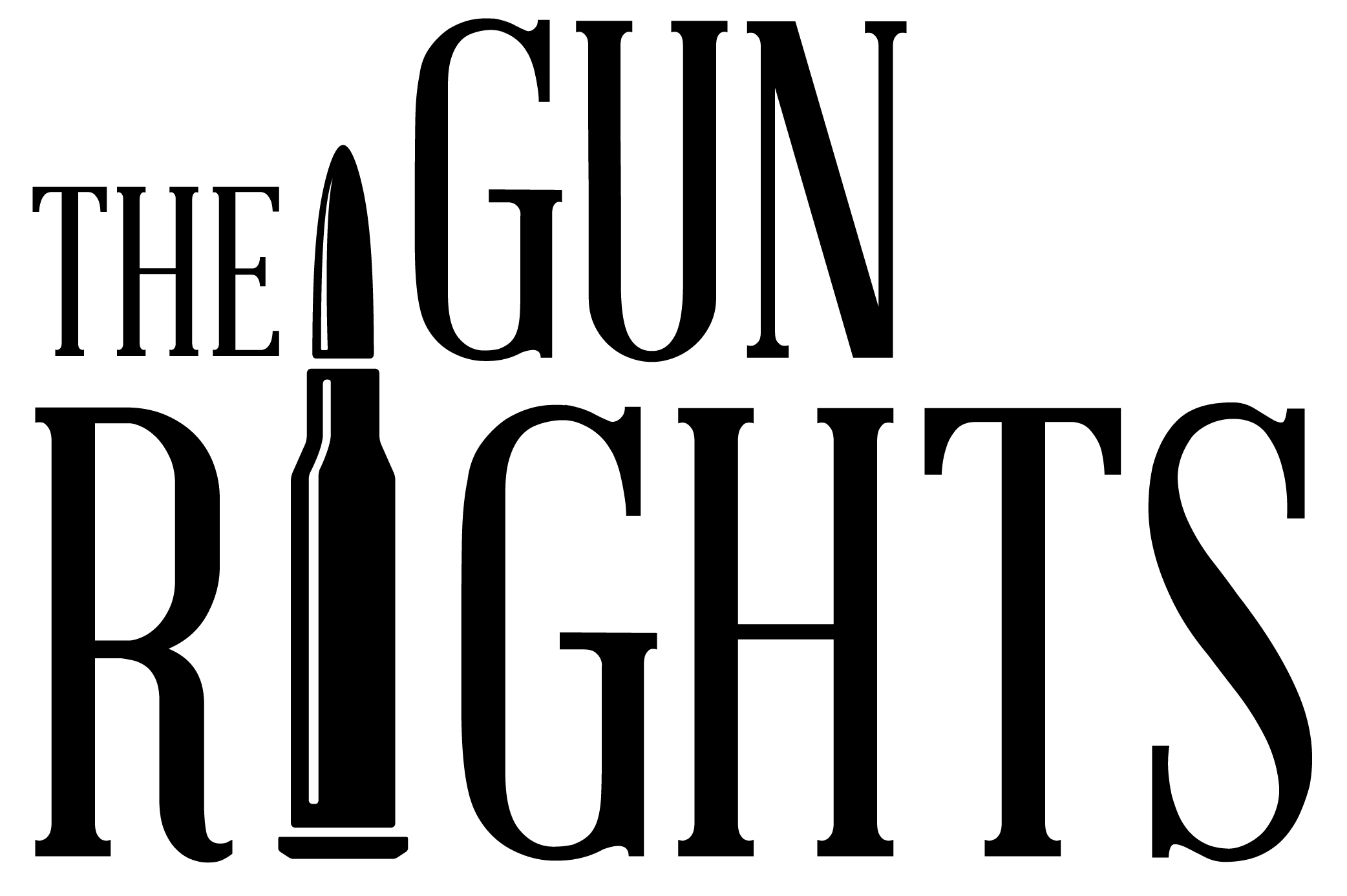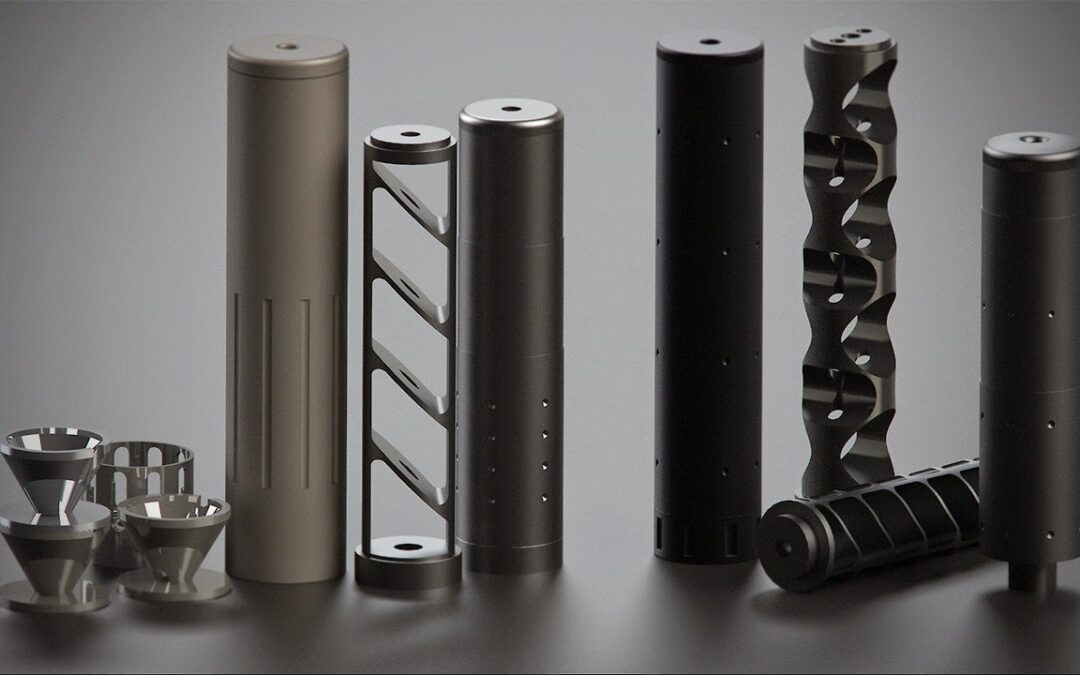Silencers and Suppressors 101
Silencers, suppressors, sound modifiers are different names for the same device. Hollywood glamorized the word “Silencer” that was coined by Hiram Percy Maxim, son of gun inventor Hiram Stevens Maxim. Maxim Jr. trademarked the name Maxim Silencer and they were regularly advertised in hunting goods magazines.
Beginning in the 1950’s and continuing throughout the 60’s and beyond gangster movies, and spy movies burned the term into our collective minds. Burned into our collective minds were two things. One, that anyone who used one was a bad guy or a spy, and the other that they made the sound of the gun all but inaudible.
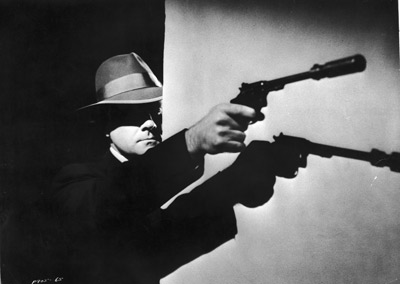 “Suppressor” on the other hand did not come into use until a 1985 patent application for a device that was for “firearm noise reduction”. “A suppressor for reducing the muzzle blast of firearms or the like” I believe it reads. To understand how a suppressor works, I guess we need to know what makes up the BOOM from a firearm.
“Suppressor” on the other hand did not come into use until a 1985 patent application for a device that was for “firearm noise reduction”. “A suppressor for reducing the muzzle blast of firearms or the like” I believe it reads. To understand how a suppressor works, I guess we need to know what makes up the BOOM from a firearm.
The Anatomy Of Firearm Noise
The bang, no mater how loud or relatively soft it is, is determined by three factors. Part of it can be managed, however, some of it is beyond the operator or manufacturer to eliminate.
So what are the three factors?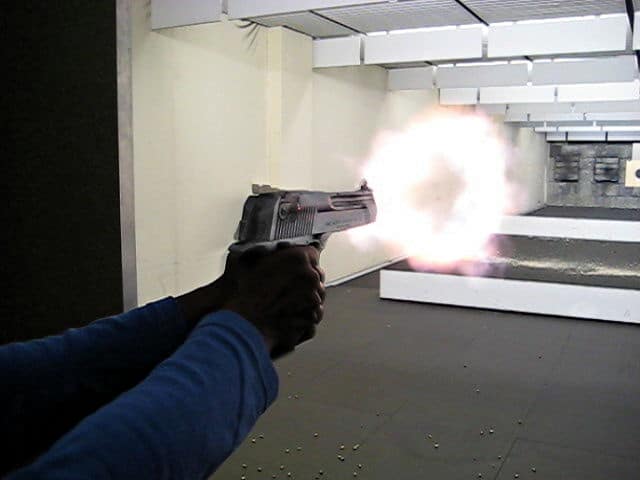
- Muzzle Blast ( High temperature, high pressure gasses escaping the after the bullet leaves the barrel)
- Sonic Boom (Sound associated with shockwaves created by the projectile or bullet exceeding the speed of sound)
- Mechanical noise ( Moving parts of the firearm)
A suppressor can only affect the noise generated by two of the primary sources, muzzle blast and sonic boom. Truly a suppressor has more effect on muzzle blast than sonic boom, but the advent of subsonic ammunition adds greatly to the effect of a suppressor.
The mechanical noise aspect is not affected at all by a suppressor and may actually become a distinct noise that was never apparent before the use of a suppressor as it was covered by both the muzzle blast and sonic boom noise prior to use of the suppressor.
Revolvers are the most mechanically quiet of hand guns, just due to the amount of moving pieces required to, or that move or cycle when the firearm is shot, so suppressing a revolver would result in a quieter firearm compared to suppressing a semi auto hand gun of the same caliber.
The smaller the caliber, the more efficient or effective the suppressor can be. A .22 rim fire handgun with a suppressor is going to be remarkably quieter than a .45 caliber handgun with a similar suppressor as the muzzle blast generated is directly proportional to the amount of propellant, or gunpowder, contained within the cartridge. This is also the reason that the suppressor design becomes larger as the caliber size increases.
Design and Construction
A suppressor is typically made of a hollow metal tube made from steel, aluminum or even titanium that contains expansion chambers. Usually cylindrical in shape, it attaches to the muzzle of a pistol, rifle or even a machine gun. These types require that the barrel of the firearm be threaded to accept the suppressor. Another type is the “integral suppressor”, which typically consists of an expansion chamber or chambers surrounding the barrel, not screwed on as with a typical suppressor. The barrel has openings or “ports” which bleed off gases into the chambers. This type of suppressor is part of the firearm, henceforth “Integral”, so any maintenance or cleaning will require that firearm be at least partially disassembled.
Both of these types of suppressors reduce noise by allowing the rapidly expanding gasses of the exploding cartridge to be slowed down or “decelerated” and cooled through a series of hollow chambers. The trapped gas exits the suppressor at a greatly increased amount of time compared to with no suppressor and at a greatly reduced speed or velocity, producing less of a noise signature.
Suppressors vary greatly in design, size and efficiency, some have even been made to be disposable as was for the U.S. Navy in the 80’s for a 9mm pistol. It was designed to be used for six shots with standard issue ammo, or up to 30 shots with sub sonic (slower than the speed of sound) ammunition.
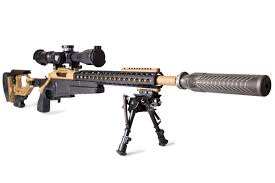 There is even a suppressor that is designed for use with the incredibly powerful .50 cal BMG cartridge. It is an amazing 20 inches long and 3 inches in diameter!
There is even a suppressor that is designed for use with the incredibly powerful .50 cal BMG cartridge. It is an amazing 20 inches long and 3 inches in diameter!
Another type of suppressor that looks basically the same from the outside, but adds a twist is called a “wipe suppressor” It is round as is the standard can type, but that is where the similarities end. The “wipe suppressor” does basically what its name implies. There are a series of light plastic, neoprene or other material “Wipes” that are built into the inside of the cylinder that the bullet actually come into contact with, essentially wiping the bullet as it passes through them. Each wipe slows the expansion of the hot gas and muzzle blast as the bullet passes through them. They are a very effective suppressor, but as you can imagine, they require frequent maintenance.
Suppressor Components
Baffles and spacers
Baffles are usually circular metal dividers which separate the tube into numerous expansion chambers. Each baffle has a hole in its center to permit the bullet to pass through the suppressor, out the barrel and on to the intended target. The hole is typically 1mm larger than the caliber of bullet that the suppressor is intended for, to minimize the risk of the bullet hitting the baffle in what is known as a “baffle strike”
As can be seen in the pictures, the design, number, pattern and diameter of the baffles can become quite intricate and complex with each manufacturer as each claim to have the “quietest suppressor”
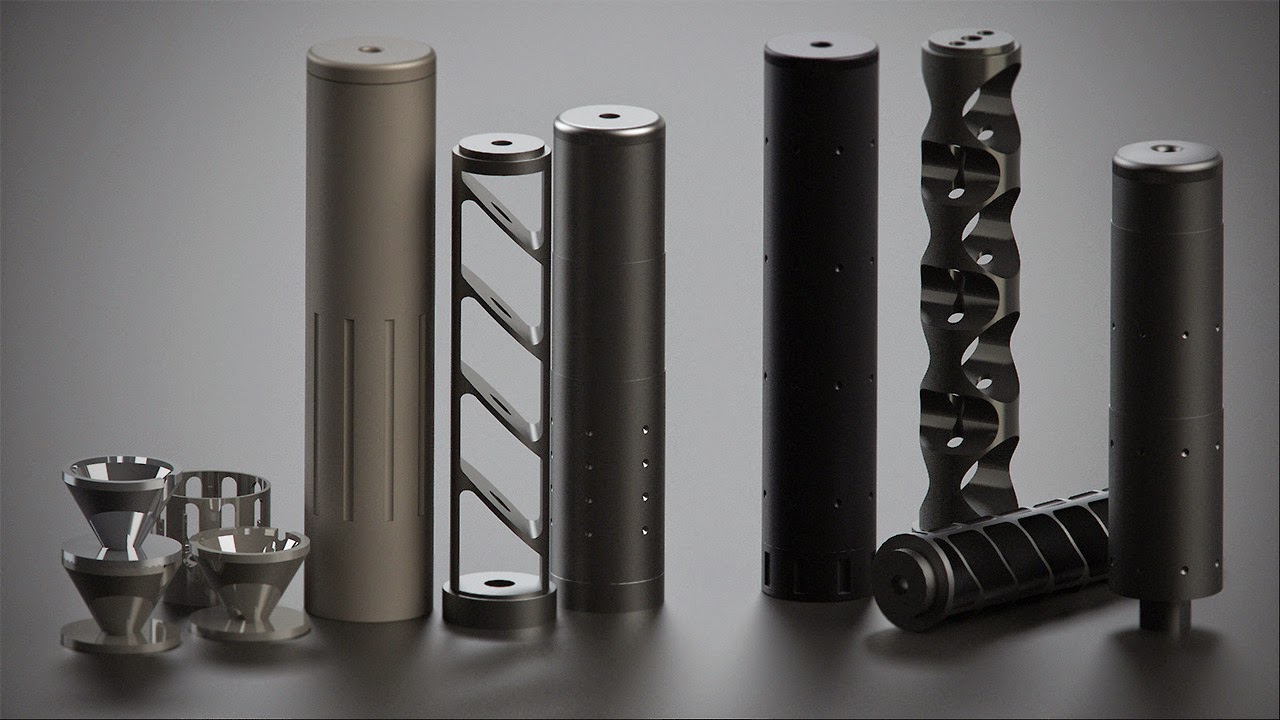
Wipes
Wipes are inner dividers intended to actually touch the bullet as it passes through the suppressor. The wipes are typically made of rubber, plastic or foam. Each wipe may have a hole drilled through it, a pattern stamped into its surface at the point where the bullet will strike it, or it may simply have a hole punched through it by the bullet when it is first used. Many “Wipe” type suppressors were used during the Vietnam War era, although not many are used today as anything that “touches” the bullet usually imparts significant accuracy issues.
Most all “Wipe” type suppressors have been abandoned due to these accuracy issues as well as extensive cleaning and maintenance issues.
Attachment
Apart from “integral suppressors” which are integrated as part of the barrel by the manufacturer, most suppressors have a “female” threaded end which attach to “male” threads that are cut into the outside, at the end of the firearms barrel. This type of connection is used mostly on handguns and rifles chambered in .22 LR. More powerful rifles use “quick detach” mechanisms as a threaded connection has the propensity to become over tightened and very difficult to remove due to the harsh recoil and heat produced by rifle rounds.

Improvised Suppressors
It’s truly amazing the variety of materials that people have tried to make suppressors out of. In 2015, the Los Angeles County Sheriff recovered a ZB vz.26 light machine gun with an oil filter attached to the barrel. Subsequently there is actually a company that is producing an adapter that screws on to the barrel of a rifle or pistol and the DIRECTLY screws into an automobile oil filter! As one can see by the picture, “Aiming” this contraption might prove difficult. Plastic water bottles and foam filled pillows have been recovered as well. Thing is, in the United States, improvised suppressors are governed by the same laws as manufactured ones! In other words, if you’re going to make one, you better register it with the Federal Government AND have a stamp for it. Get caught without one or the other and its Federal prison time!
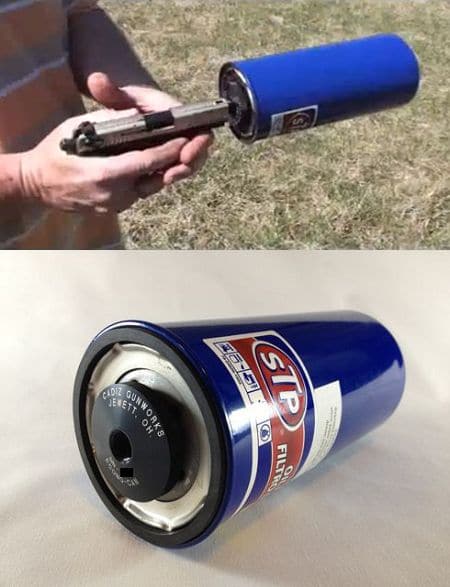
Effectiveness
Live tests by independent reviewers of numerous commercially available suppressors find that even low power, unsuppressed .22LR handguns produce muzzle blast sound of over 160 decibels (dB). In testing, most of the suppressors reduced the sound of the muzzle blast to somewhere between 130 and 145dB, with the best suppressors metering in right around 117dB.
The actual suppression of sound ranged from 14.3 to 43 dB, with most data points around the 30dB mark.
So, what does that mean in the real world? Well, common ear protection worn to participate in the shooting sports provides 18 to 32dB of sound reduction at the ear.
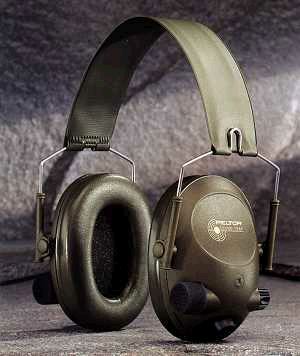 To compare our everyday noise levels to that of a firearm, a small firecracker has a decibel rating of 100dB while an ambulance has a rating of 14dB.
To compare our everyday noise levels to that of a firearm, a small firecracker has a decibel rating of 100dB while an ambulance has a rating of 14dB.
While some may consider the noise reduction of a suppressor significant enough to permit “safe shooting” without hearing protection, remember that noise induced hearing loss may occur at 85dB if prolonged for a long period of time. So, do suppressors help protect your hearing? Yes! Can you shoot regularly with out hearing protection with a suppressor on your fire arm and not expect to lose your hearing? No. Where suppressors have their largest impact in the civilian world is when used in the hunting sports. The single shot that is taken year after year after year has a debilitating effect on your hearing, ultimately leading to permanent hearing loss.
So the Hollywood almost inaudible noise we hear in all of the movies and TV shows? Not so much!
Regulation in the United States
In the United States, taxes and strict regulations affect not only the sale, but also the manufacture of suppressors. Whether it is a “Home made suppressor” or a commercially “manufactured suppressor” they are all regulated and controlled under the National Firearms Act. They are legal for individuals to possess for lawful purposes in 42 of 50 states, however, a prospective owner must go through an application process administered by the Bureau of Alcohol, Tobacco, firearms and Explosives (ATF). This process requires a Federal tax payment of $200.00 and a thorough criminal background check. The “tax” payment buys a revenue stamp, which a legal document is allowing the possession of a suppressor.
suppressors. Whether it is a “Home made suppressor” or a commercially “manufactured suppressor” they are all regulated and controlled under the National Firearms Act. They are legal for individuals to possess for lawful purposes in 42 of 50 states, however, a prospective owner must go through an application process administered by the Bureau of Alcohol, Tobacco, firearms and Explosives (ATF). This process requires a Federal tax payment of $200.00 and a thorough criminal background check. The “tax” payment buys a revenue stamp, which a legal document is allowing the possession of a suppressor.
The eight states that do not allow the possession of suppressor at the writing of this article are; California, (of course) Delaware, Hawaii, Illinois, Massachusetts, New Jersey, New York, Rhode Island and the District of Columbia.
The Federal legal requirements to manufacture a suppressor in the United States are found in Title 26, chapter 53 of the United States Code.
Federal Law provides sever penalties for crimes of violence committed using firearms equipped with suppressors: a minimum sentence of 30 years.
As suppressors become more and more advanced, and provide more and more hearing protection, I would hope that the few States that are left banning their use will see the light and allow us to join the ranks of the hearing!
If you have a favorite suppressor, a favorite suppressor/caliber combination or just a comment of how using a “suppressed firearm” has saved your hearing, feel free to leave a comment below!
